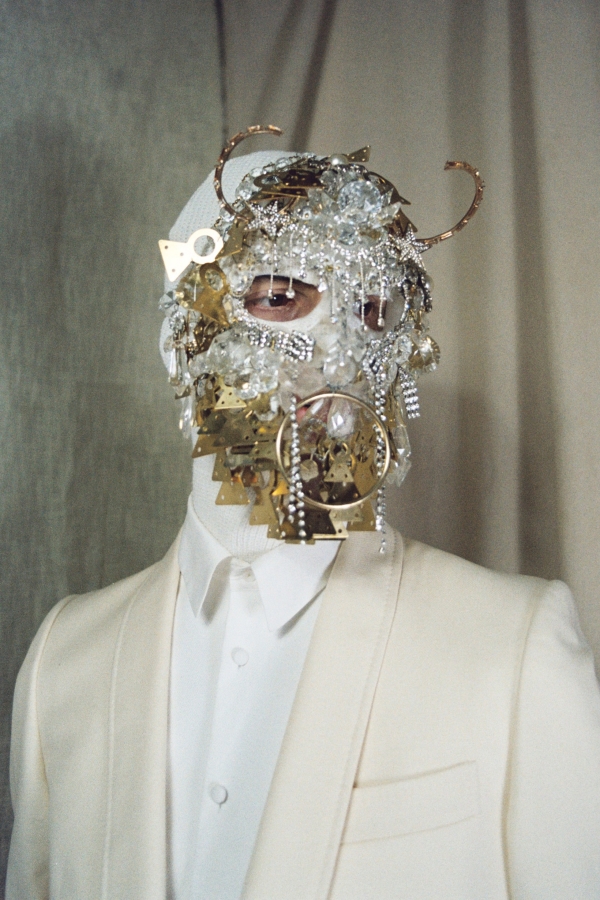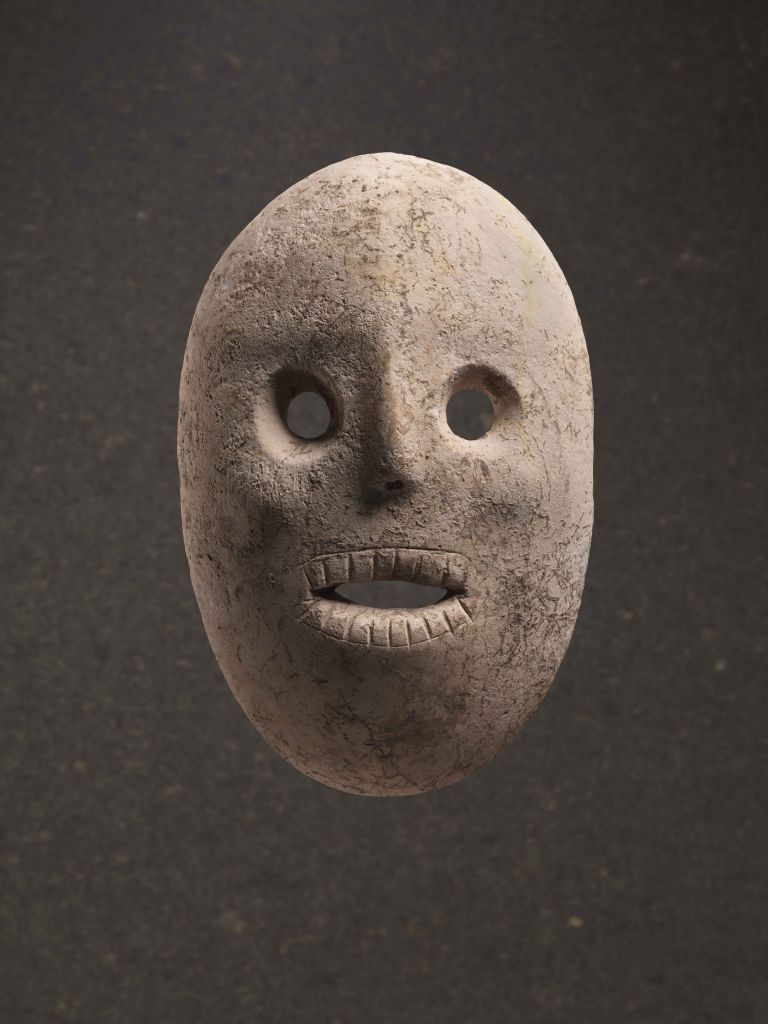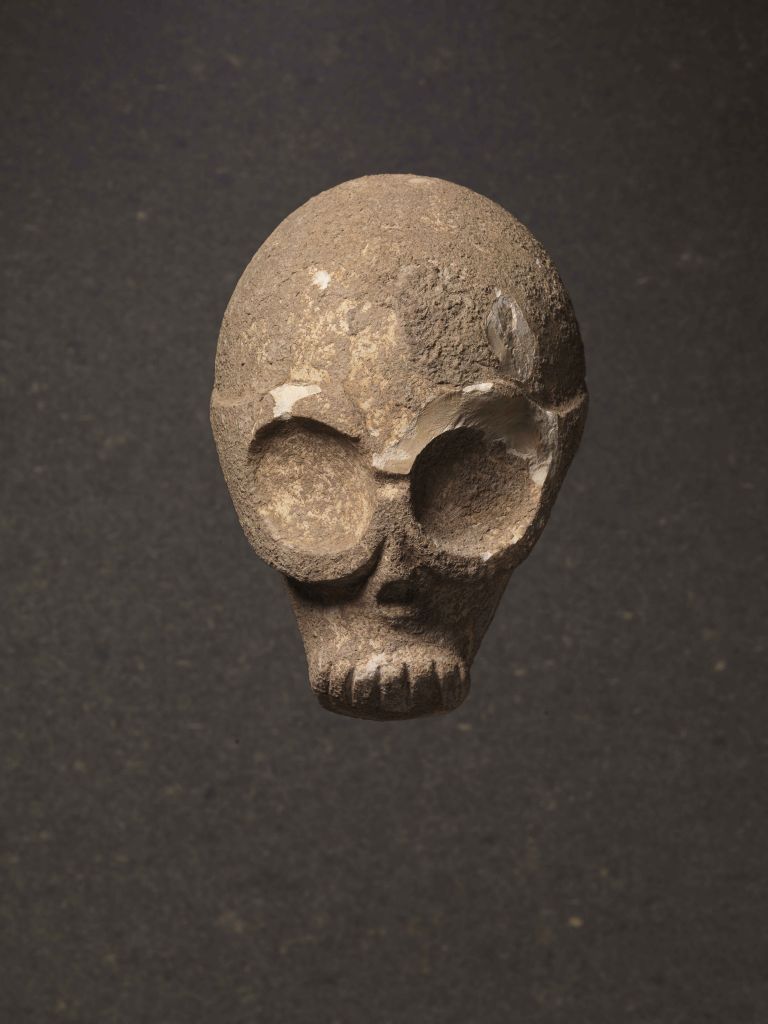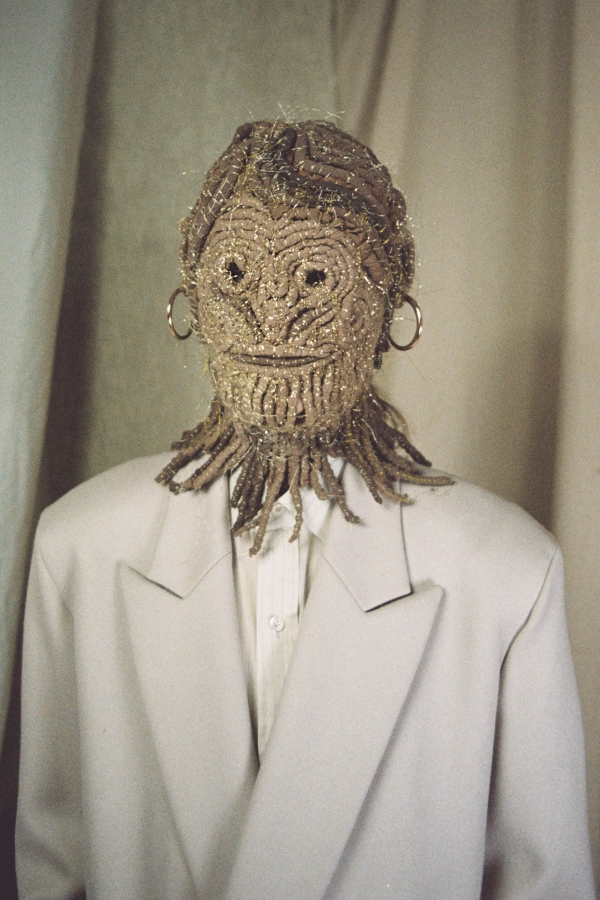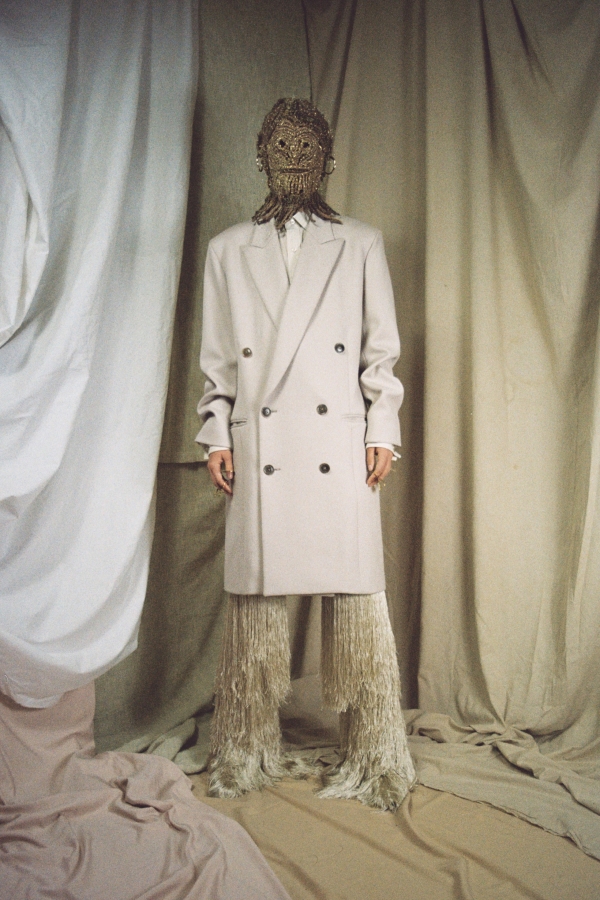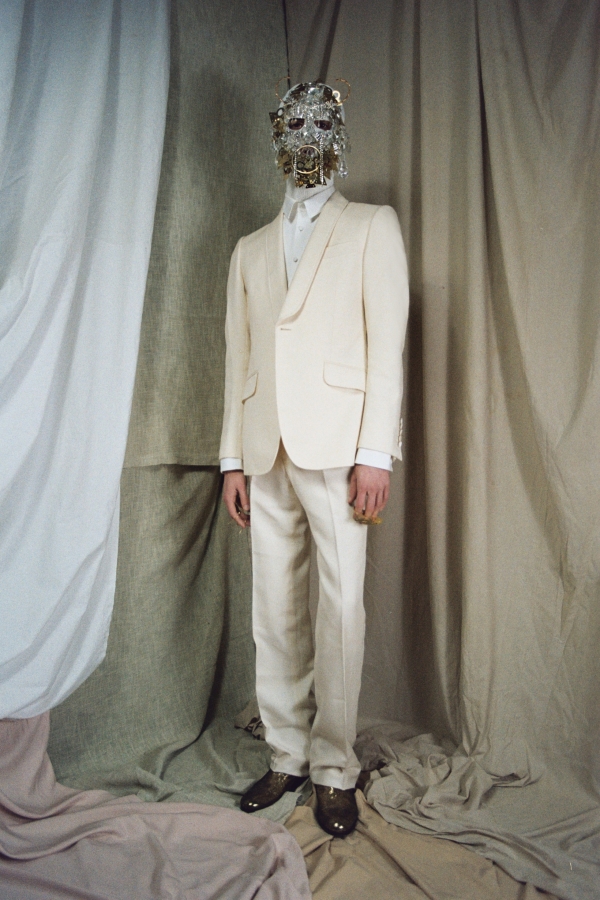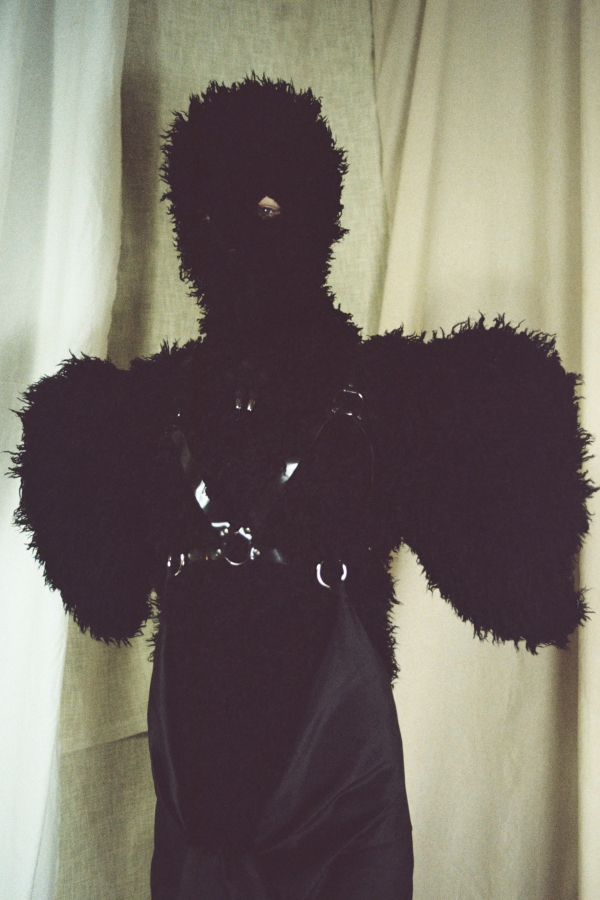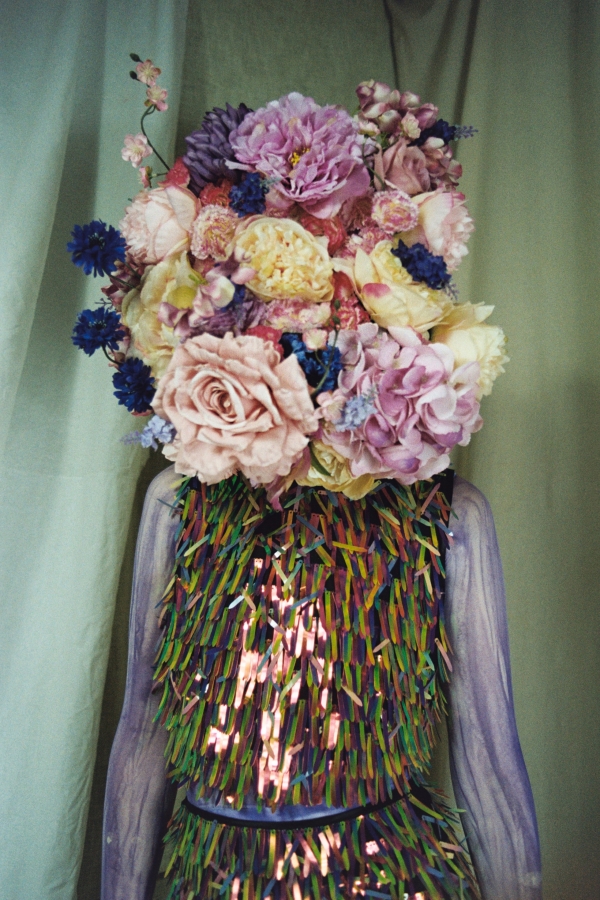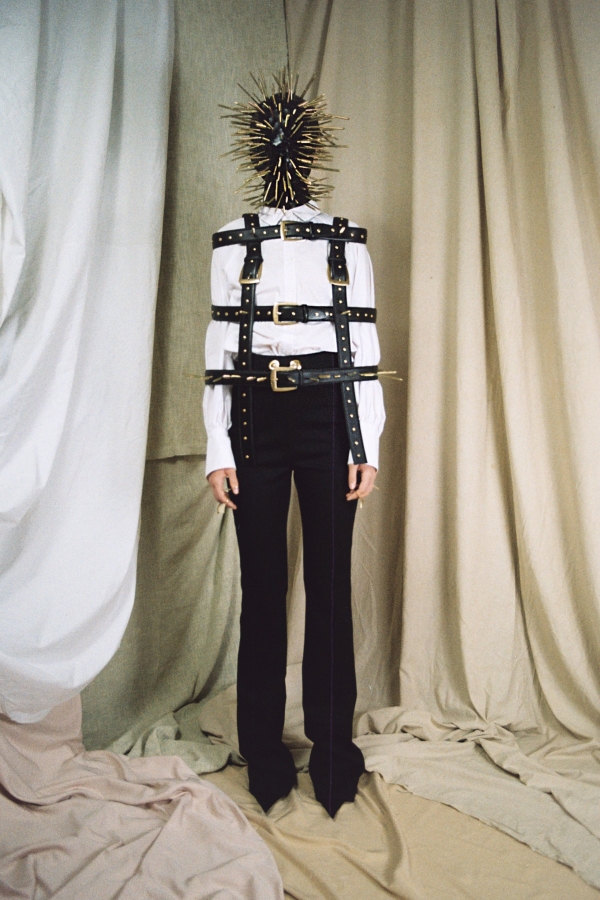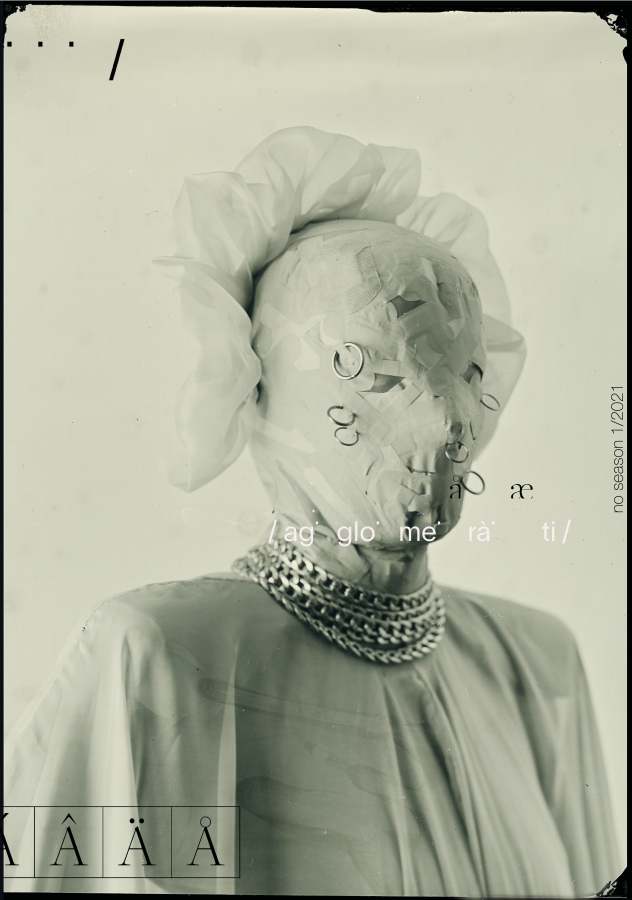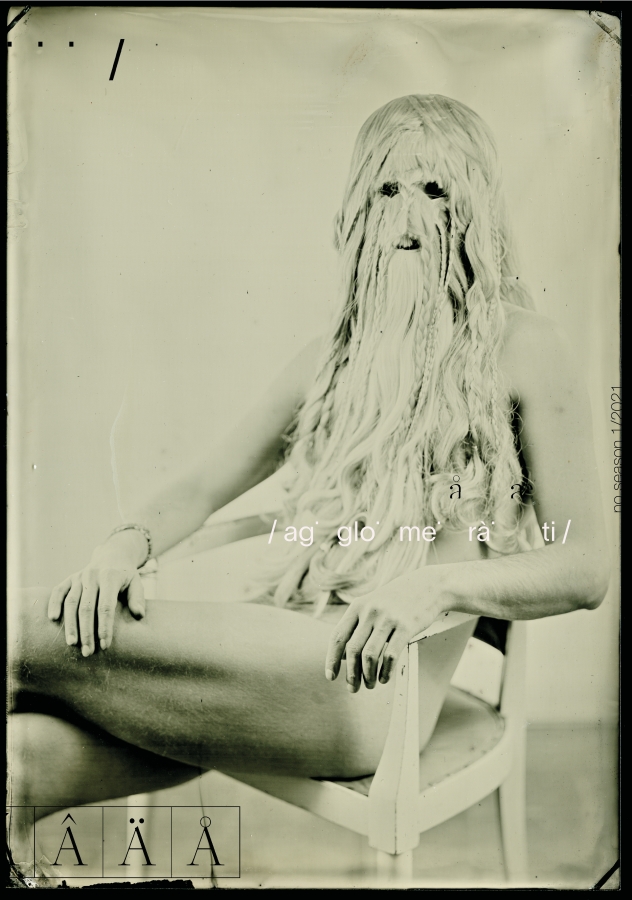The story of a creative project that lies between fashion and performance.
Word to the fashion stylist Francesco Casarotto.
A mask is an object as old as the world. But if you stop at looking at some of the masks found in 1983 in the cave of Nahal Hemar in Israel, you will probably agree with me that these objects not only deal with the meaning of “identity” in the way we intend it today, but also with what this word will mean in the future.
I started thinking about the history of this object after the conversation I had with Francesco Casarotto, in which we talked about his creations. As I told him the day after our conversation, the main reason that pushed me to contact him was the thing that most impressed me about his masks, in addition to the obvious sartorial mystery: the feeling of recognizing in those images something deeply familiar. A meaning that made me oscillate between charm and fear.
The oldest masks we came to know were made nine thousand years ago, three thousand years before humans became able to communicate through writing. Today, it seems a paradox that such an old representation of ourselves has been able to grasp certain aspects of being, creating an object with no particular productive function, but eternal in his communicative power. And yet, as with perhaps no other wearable object, right at that stage of our evolution, we were able to condense and insert into a single form a quantity of virtually infinite meanings and imaginary. In 2014, James Snyder motivated this creative momentum by identifying it as “one of the first glimmers of existential reflection”.
Since then the mask has never stopped influencing society and most of the artistic-cultural scenes (fashion, art and music), being archaic and at the same time contemporary and futuristic. Its spread is linked to its ability to respond to a need that has been defined through the acting practice: to create a ‘door’, able to join one dimension to another, finding a compromise to amplify our ways of being: while we hide our identity, we become something else.
We experienced this very intensely during the last pandemic year, in which the object of the mask assumed new and different meanings, creating new ways of relating to each other. Why do masks retain this power? Because they bring us to other dimensions. In addition to being used to hide us, they were also used to guide energies stronger than ours.
Driven by a personal and deep desire for research, Francesco Casarotto, stylist and fashion consultant, decided to dedicate himself to this personal project: “Agglomerati” (in English “agglomerates”), his first collection of handcrafted masks, named ‘No Season Collection N, 0/2021.
Composed by filaments of lurex, tights, skin and gold screws, crochet, wool threads, rhinestones and flowers, up to the hair, patches and piercings, he came to the elaboration of these “agglomerates”, put side-by-side with the design of dresses (double-breasted coats, shirt-trouser suits, flounced dresses in lace or long with multicolored sequins) and a styling studied in details. The main reason for this, as I had the occasion to discover by myself, is to allow important characters that came from his mind to finally be able to exist outside his imagination, manifesting their energy and finding a place in the real world.
In “Agglomerati”, fashion meets performance through a process of craftsmanship that is free from production and commercial logics, pursuing exclusively a goal of personal research that is recognized in design, so as in the attention to details and the research of materials.
Tell me something about you, I would like you to start with something that maybe did not come out during other interviews.
Well, I guess that something needs to be hidden (laughs). I have been a stylist for ten years and I am very happy with my career, which I would never change, but the most physical part of my job has inevitably been pushed aside and I have always missed it. In all the things I do, I feel the desire to build something, and I’m not referring to overlapping fabrics, but to the transformation of ideas into something concrete, but I want to talk to you about this later..
To tell you about the project, it is fundamental that I start with talking about Mrs. Taverna, my therapist, and the introspective process that I started with her during the years of working. Like all of us, I’ve been a teenager who experienced very vividly his complexities, and for various reasons, I’ve always dealt with several psychologists. I came to recognize the importance of going to therapy, even if this thing is not seen by everyone in the same way. We are taught to read and write, but no one actually educates us in the comprehension of how our mind works. With Mrs. Taverna we went from talking about what happened to me to a system of “thinking” that went deeper: a discussion about the obstacles of our mind, certain “stakes” created initially to protect you but that can become negative influences.
A fundamental step which we came through has been the identification of the internal voices we all hear: an extraordinary job that forces you to observe how the brain works and sees itself. Assigning an identity to these “influences” or “voices”, has been the starting point of the Agglomerati project, with the first nine masks.
And how did the masks start to have a form, physically?
When I wanted the masks to bring out certain feelings, the aesthetic part immediately took part in the creative process and guided me in the choice of the materials. Fear, anxiety, desire, doubt: everything I felt developed in a concrete direction, gave shape to the protagonists of my project, to the masks. At the beginning it was a way to fill the days of quarantine, then I collaborated at the fashion show of Barbara Bologna, during which was projected the extract of a video in which the masks appeared. It has been a great success and the first requests for collaboration arrived.
Until that moment I hadn’t given a defined aesthetic to the masks, so I wanted to define it with shooting. I thought about what people should wear with these masks, such as clothes and accessories. I wanted to find very complex things, respecting their identities. I took care of the packaging of most of the clothes, from shoes to bijoux and I concluded with a lookbook with my friend Omar Macchiavelli. I must say that the final version of the Agglomerati project has been defined by analog photography, characterized by a particular type of atmosphere generated by the chemical deterioration. The thing that I always like to underscore is that I did not in my intentions to create something purely “fashion”, but not even something that is anti-fashion.
I am neither an artist nor a stylist, I define myself as a craftsman with a strong imagination and who works to make visible what he has in his head. The main point is that all masks are openly interpretable.
What did you want to tell me before?
Oh yes, that the creative act, and, therefore, the physical one, is a great cure for the human mind. The hands have to move in a certain way… For example, to make a mask, about fifty tights were wrapped around them, tight with a golden thread and finally sewn. It’s something almost meditative: you focus on something schematic, smooth, and move on with that. Mrs. Taverna often suggested shifting my attention from my mind to my body: when I work on masks I realize that time is passing only when I start to feel slight back pain.
What impresses me the most is that when you talk you use a lot of metaphors. Like if your own experience becomes itself an image.
Yes… I could have drawn these things, but it wasn’t what I wanted to do. I wanted to make something that can be worn and can become real. This gives life to my characters much more than if I had just depicted them. Making them live was like eliminating the different “aliens” I had in my belly… and now they are there, enclosed and kept in envelopes. I still feel them inside me, because there’s a wound… but I managed to get them out.
The first Agglomerati collection came out in January, 2020. Now that it is a complete project, do you still feel the need to create the masks or has it become something else?
No, I need it. First of all, because creating gives me pleasure. Working on photo sets is rewarding, but you always come to a conclusion that is never something physical: the photos remain digital. In making masks instead, there is always a part of experimentation of materials that continues. Now I’m trying to understand the possibilities of resin, I tried different materials. I want to continue, now more than letting out the characters I have inside me I would like to create new ones.

How do you do that?
I dream a lot. Real situations but also other worlds. Lately, I’ve been dreaming about this kind of apocalypse where there are always unreal characters. When I wake up in the morning, I get a sense of what I saw. I remember the colors, the silhouette and I wonder “how can I make it aesthetically an Agglomerate?”. I gave this name to the project precisely because it indicates both the verb “agglomerate”, which is the action of an aesthetic characterized by ornaments and embroidery. I’ve never been a minimalist.
When you mentioned adolescence, I thought that when we are young and with very few experiences, we are scared about the new and very unconfident. In your objects I find a certain beauty of restlessness, something that in the old fairy tales united monstrous scenarios to others full of splendor. And it’s very interesting that your “confusion” has turned into “authorship”. When you finish a mask how do you manage to live with something that is judged also for its final aesthetic?
The finished masks remain present in my life. I often look at them, I touch them, I go back to their photographs. They are characters which I am very attached to, and I like to wear them, to look at myself in the mirror, to continue to find new ways to represent them. Someone asked me why the masks did not have seasonality. The answer is that I want to live with them for at least a year and have time to create new projects for them. Now I’m developing a film in which the protagonists are the Nine characters of the Agglomerati project…
Anyway, I wanted to tell you a thing that is related to dreams and the feeling of pain… It often happens that most people give this feeling exclusively negative meanings. It’s like watching a movie that terrifies you but is so compelling that you can’t close your eyes in the end. Pain, this macro category that includes so many nuances, is taught to us as something to be abandoned as soon as possible. Mrs. Taverna, instead, taught me to stay inside that, and analyze it.

Is not easy to reach a self-consciousness of this kind. I have read from other interviews that you would like to develop a collection every year, maintaining a slow approach in the production of masks.
Yes, I want to keep some comfortable spaces to do this. I don’t want it to become an assembly line. It would transform the whole process. The project requires a lot of care and attention, continuous experimentation of different materials and techniques. Concluding a mask can take up to two months…
The porous texture of the analog film creates a strong reference with the tangible. I think it is coherent with your whole process.
When you see interest in someone else’s eyes, which helps you represent your project in ways you didn’t think, you can get functional creations. A mask is an object linked to the person, because it hides the identity, and, at the same time, gives it something new. The protagonist is always the one who wears it, and a mask is a tool. In this case, it is the opposite: the person gives the body, while the mask uses the body to live. Without a dress, it would have been a half thing. I would have given a dimension to the mask, but the character would not have been concluded.
Every detail has to be defined in order to make the story reliable, right?
I had a dream in which I attended my funeral. And there were only the masks, the characters and it was a wonderful image. Like there’s any kind of living creature, human or extraterrestrial.
There was masks from the collection or new ones?
There were nine characters, but I don’t remember really well.
So you feel the presence of these characters…
The funeral was a moment like any other in which they made me worthy of something, as if they declared to me that I too had an important role for them.
One of the most interesting themes on which Agglomerati can make us think is that even in times in which we discuss a lot about how to protect our identity in the digital world, the mask maintains its communicative power. The mask does not seem to belong to anyone but to itself and to its mimesis desire, despite it owes a fundamental part to its creator. Neither he, who designed it, can actually affirm what will be the image and the meaning that others will see form on the face of the wearer.
Francesco Casarotto, born in Treviso, graduated in Fashion Design at the IUAV University of Venice. Based in Milan, he works as a freelance stylist and fashion consultant for international brands and magazines.

